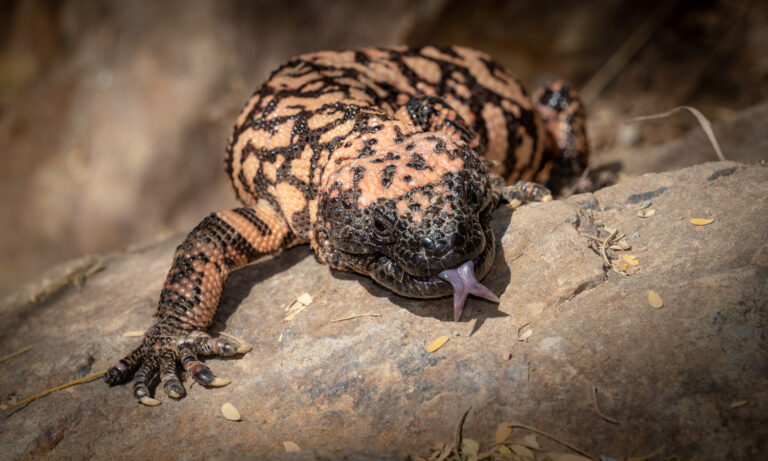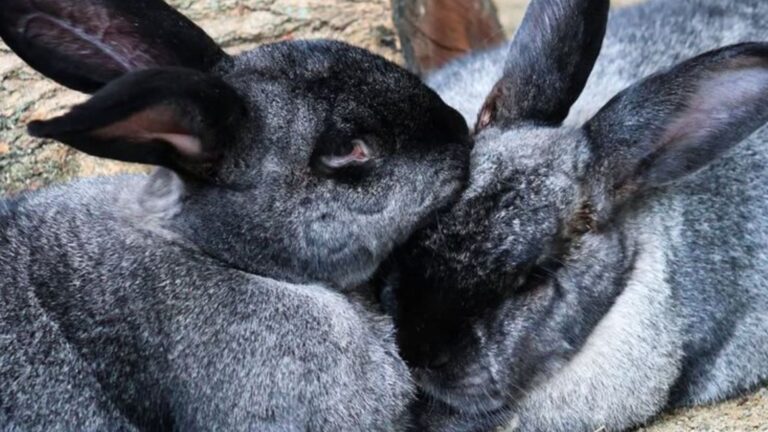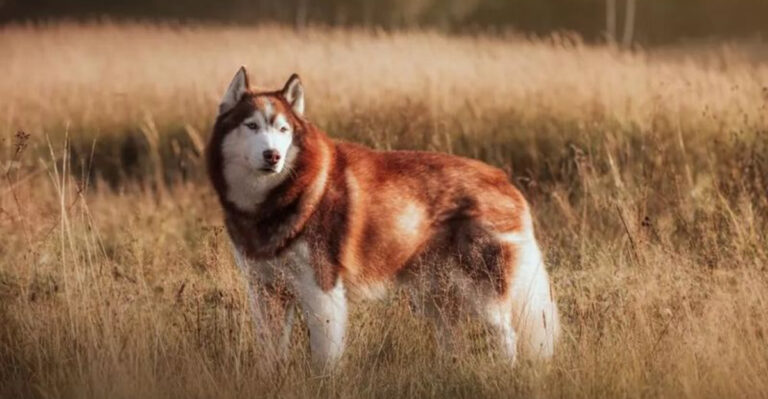10 Ice Age Cats That Once Roamed Alongside Mammoths
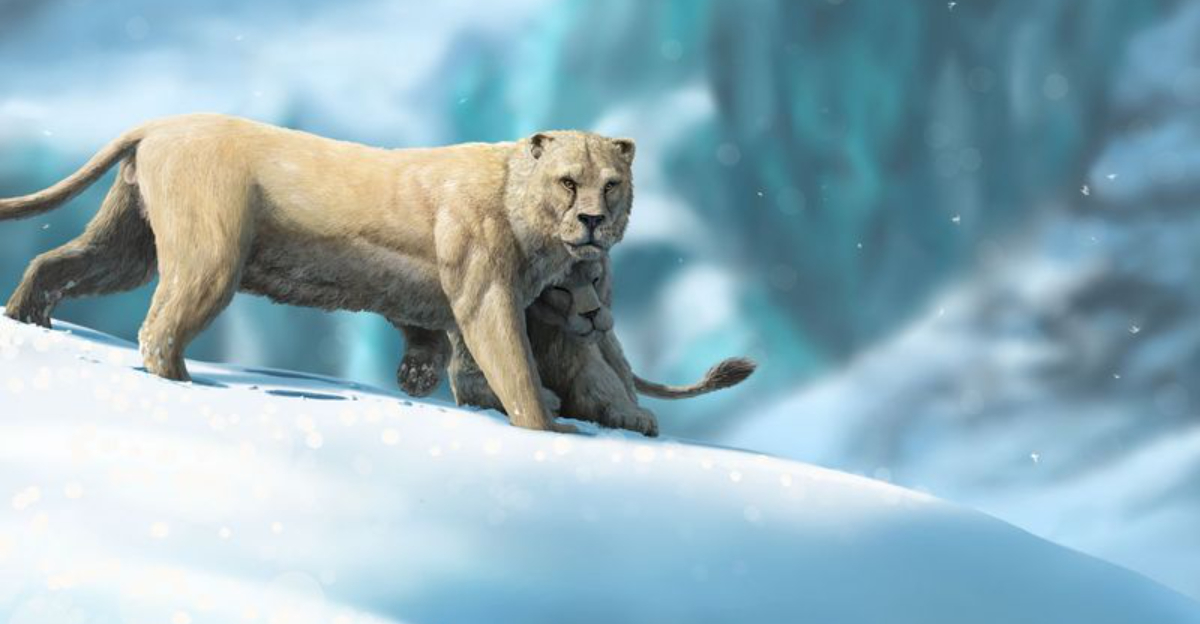
Long before house cats claimed our hearts and homes, fearsome feline predators ruled the prehistoric world. During the Ice Age, while woolly mammoths thundered across frozen landscapes, remarkable big cats hunted in the same territories.
These forgotten felines were powerful hunters with specialized adaptations for the harsh glacial environment, and their fossilized remains tell fascinating stories of a world we can barely imagine.
1. Saber-Toothed Tiger (Smilodon)

Forget what you’ve seen in cartoons! These iconic predators weren’t tigers at all but specialized cats with dagger-like canines that could grow up to 11 inches long.
Smilodons were muscular ambush hunters with powerful forelimbs for wrestling down prey like bison and young mammoths. Despite their fearsome appearance, fossils show they sometimes cared for injured pride members for months or years.
2. American Lion (Panthera leo atrox)

Towering over today’s African lions, these massive cats weighed up to 800 pounds and stood taller than a man at the shoulder. They roamed across North America when it was a very different place.
Fossil evidence suggests they hunted in small groups, taking down enormous prey including juvenile mammoths. Their remains have been found from Alaska to Mexico, showing how adaptable they were to different Ice Age environments.
3. Scimitar-Toothed Cat (Homotherium)

Racing across open plains on long, cheetah-like legs, these daylight hunters were built for endurance rather than ambush. Their serrated teeth were shorter than Smilodon’s but equally effective.
Scientists believe Homotherium hunted in coordinated packs, similar to wolves. Their bones show adaptations for long-distance pursuits, with front legs longer than rear ones – giving them a distinctive sloped appearance unlike any modern cat.
4. Cave Lion (Panthera spelaea)

Famous from ancient cave paintings, these magnificent beasts were 25% larger than modern African lions and lacked the shaggy manes we associate with lions today.
Cave lions thrived across Europe, Asia, and even North America during the coldest periods of the Ice Age. Unlike their name suggests, they didn’t actually live in caves – humans just found their remains and painted their likenesses inside caverns where people sheltered.
5. American Cheetah (Miracinonyx)
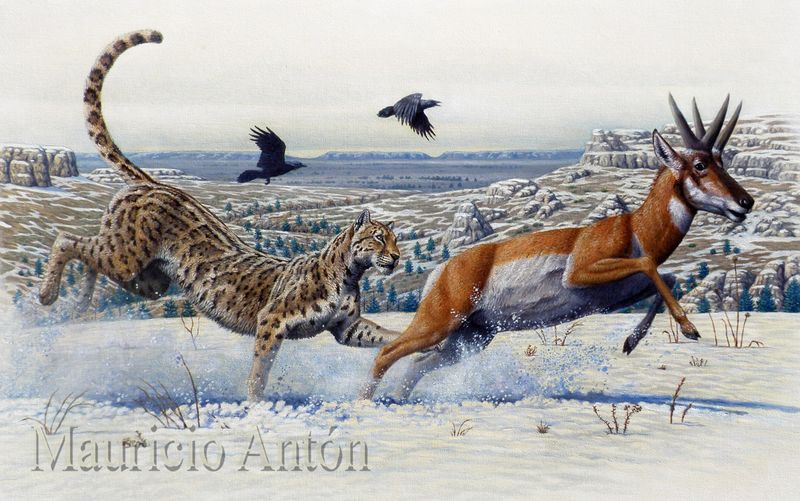
Surprisingly, North America once had its own cheetah-like cats! These swift hunters weren’t true cheetahs but evolved similar body types through convergent evolution – nature’s way of creating similar solutions independently.
Adapted for high-speed chases across open grasslands, they likely pursued prehistoric pronghorn antelopes. The relationship between predator and prey shaped both species, explaining why modern pronghorns can run much faster than any current North American predator.
6. Eurasian Jaguar (Panthera gombaszoegensis)

Roaming through European forests when they were much colder than today, this powerful cat combined features of modern jaguars and tigers. Paleontologists call it the “European jaguar” despite significant differences from its modern relatives.
Bigger than living jaguars but smaller than lions, these adaptable hunters thrived for nearly two million years before disappearing about 500,000 years ago. Their strong jaws could crush bones and turtle shells – a useful skill during harsh Ice Age winters.
7. Giant Cheetah (Acinonyx pardinensis)
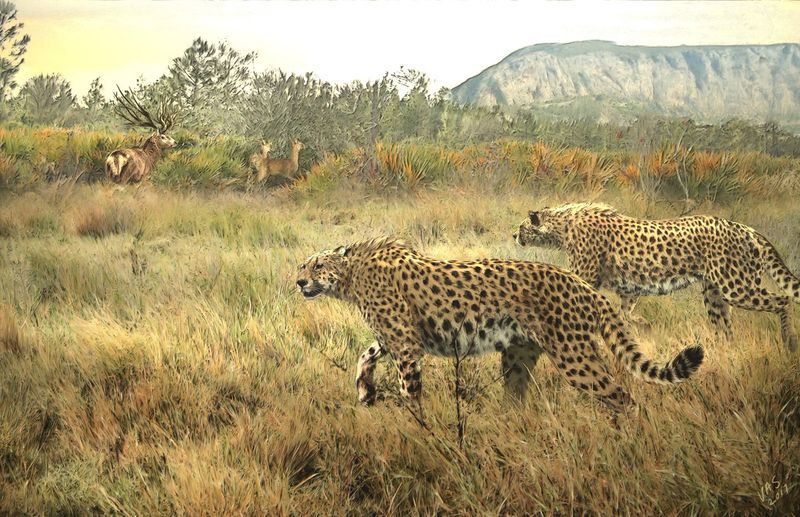
Lightning-fast and surprisingly large, the giant cheetah was nearly twice the size of modern cheetahs while maintaining incredible speed. Imagine a 200-pound sprinter capable of chasing down almost any prey across the ancient savannas!
Fossil evidence shows these spectacular cats hunted across Europe, Asia, and Africa during the early Ice Age. Their longer legs and enhanced flexibility made them the ultimate running machines of their time, specialized for bringing down medium-sized mammals.
8. Xenosmilus (“Strange Knife”)

Defying typical cat categories, Xenosmilus combined features from multiple feline types into one terrifying package. Neither a true saber-tooth nor a typical big cat, it sported serrated teeth along its entire jaw – not just the canines.
Built like a bear with a cat’s head, this powerhouse had short, thick limbs and a robust body. Paleontologists believe it was an ambush predator that overwhelmed victims with brute force rather than speed, using its entire mouth as a slashing weapon.
9. American Scimitar Cat (Dinobastis)

Among the last great Ice Age cats to go extinct, Dinobastis survived until humans arrived in the Americas – potentially making it the only animal on this list our ancestors might have encountered.
With forward-facing eyes perfect for judging distances during high-speed chases, these specialized hunters had relatively small brains but incredibly strong neck muscles. Their distinct skull shape supported powerful bites that could quickly dispatch struggling prey after lightning-fast pursuits.
10. Megantereon (“Great Beast”)
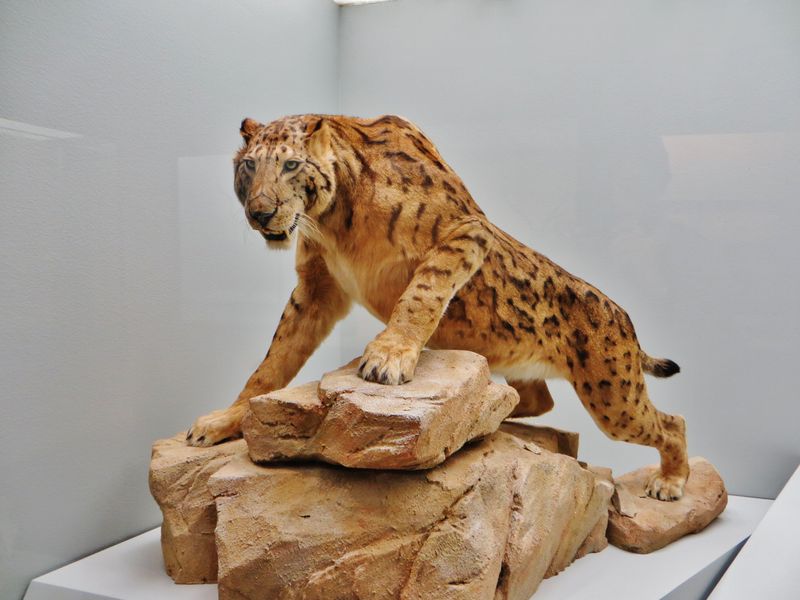
Before Smilodon evolved, Megantereon pioneered the saber-tooth lifestyle across five continents. About the size of a jaguar but with a more robust build, this global predator was remarkably successful for over three million years.
Unlike later saber-tooths, Megantereon had shorter front limbs and was likely an ambush specialist that relied on stealth. Its smaller size allowed it to drag kills into trees – away from competing scavengers like dire wolves and giant hyenas that shared the mammoth-filled landscapes.

